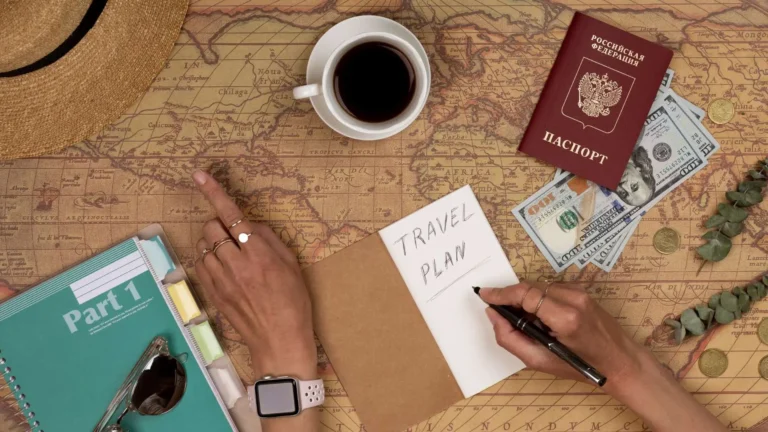Table of Contents
Travel comes with excitement, but also with uncertainty. A dream trip can be disrupted by a missed flight, lost luggage, or an unexpected illness. That’s where travel insurance enters the picture: it promises peace of mind, but for many travelers, it also raises confusion. Should you buy it for every trip? Which parts are actually worth the cost, and which ones are unnecessary add-ons?
The truth is, travel insurance isn’t one-size-fits-all. Some coverage is essential no matter where you go, while other policies are designed to play on your fears more than your needs. Learning to separate the “must-haves” from the “nice-to-haves” is the difference between protecting your trip wisely and overspending on premiums.
This guide walks you through the basics of travel insurance: the protection that actually matters, the extras you can usually skip, and how to match coverage to your personal travel style. By the end, you’ll know how to get the right coverage without draining your budget — and how tools like Beem’s Budget Planner can help you see the value in real numbers.
Why Travel Insurance Matters
Protection Against Financial Risk
Travel can be surprisingly fragile. A sudden illness before departure could cancel thousands of dollars in nonrefundable bookings. A medical emergency abroad could cost more than the trip itself — in some countries, a single hospital visit runs into the tens of thousands. Without insurance, those bills land squarely on you.
Even beyond emergencies, disruptions happen. Canceled flights, lost luggage, or missed connections can cause ripple effects across your plans. Insurance won’t stop these problems, but it can cushion the financial blow.
This protection is especially important for international travelers, families with complex itineraries, or anyone booking expensive tours and accommodations in advance.
Peace of Mind While Traveling
Financial loss is only part of the equation. Worry can overshadow a trip long before something goes wrong. Insurance provides psychological backup: knowing you’re covered makes it easier to relax and enjoy yourself.
Instead of stressing about “what if,” you can focus on being present. This peace of mind often matters just as much as the payout. Many seasoned travelers see insurance not just as a safety net, but as a way to travel lighter emotionally.
Tailoring to Your Travel Style
The kind of insurance you need depends heavily on the way you travel. A digital nomad staying months in one place faces different risks than a weekend tourist hopping between cities. Adventure travelers need to think about sports coverage, while families may prioritize cancellation protection.
Without tailoring, you either underinsure or waste money on coverage you’ll never use. Understanding the basics helps you build a policy that actually fits you.
The Essentials: What to Buy
Emergency Medical Coverage
This is the one type of insurance no traveler should skip. Most domestic health plans don’t extend overseas, and even if they do, they rarely cover evacuation or out-of-network care. That means a simple broken arm in another country could become a financial nightmare.
Emergency medical coverage ensures you’re not left scrambling if something happens. Coverage limits matter here: experts often recommend at least $100,000 in medical coverage and $250,000 in evacuation coverage, especially if traveling to remote areas.
Think of it as the baseline protection. Without it, you’re exposing yourself to the highest-risk, highest-cost possibility of travel.
Trip Cancellation and Interruption
Trips are full of prepaid expenses: flights, hotel deposits, tours. If you have to cancel last minute due to illness, family emergencies, or even work obligations, those costs can vanish instantly.
Trip cancellation and interruption insurance reimburses you for what you lose. It’s particularly useful for big-ticket international trips or complex itineraries with multiple bookings. If you’re traveling on a cheap domestic flight with refundable Airbnb stays, you may not need it.
The value lies in protecting sunk costs. Ask yourself: “If I had to cancel tomorrow, how much money would I lose?” That number determines whether this coverage is worth it.
Baggage and Personal Belongings
Lost or delayed luggage isn’t just inconvenient; it can be expensive. Buying essentials at your destination adds up quickly, and replacing stolen valuables can hurt your budget.
Baggage coverage reimburses you for lost items and helps cover costs during delays. For travelers carrying expensive gear — laptops, cameras, or medical devices — this can be a lifesaver. For light packers, it’s still useful but less critical.
It’s not glamorous coverage, but it smooths over one of the most common travel frustrations.
Emergency Evacuation and Repatriation
Sometimes the biggest expense isn’t medical care itself, but getting you to where that care exists. If you fall ill in a remote area, helicopter evacuations or medical flights can cost tens of thousands of dollars.
Emergency evacuation and repatriation coverage ensures you can be transported safely to a facility — or back home — without bankrupting yourself. Even if you never use it, the potential financial risk makes it worth having.
This coverage is particularly important for adventure travelers or anyone visiting destinations with limited healthcare infrastructure.
The Extras: What to Skip (Most of the Time)
Cancel for Any Reason (CFAR) Upgrades
CFAR coverage lets you cancel for reasons not normally covered — like simply changing your mind. While flexible, it often costs 50% more and usually reimburses only 50–75% of your expenses.
This makes sense only for very expensive or complex trips where flexibility is critical. For the average vacation, the high premium isn’t worth it. Most travelers are better served by standard cancellation insurance.
Rental Car Insurance
Many travelers buy rental car coverage without realizing they’re already covered elsewhere. Credit cards often include collision damage waivers, and personal auto insurance may extend abroad.
Buying duplicate coverage wastes money. The smart move is to check your existing policies and credit card benefits before paying the rental desk. Only buy extra coverage if there’s a genuine gap.
Flight Accident Insurance
This coverage pays out if you’re injured or killed in a plane crash. While it sounds serious, the risk of accidents is extremely low, and airlines already provide compensation in such rare cases.
It’s more of a fear-based upsell than a necessity. Unless your peace of mind depends on it, you can safely skip this option.
Redundant Coverage
One of the biggest traps in travel insurance is overlap. You may already have protection from your airline, credit card, or even your existing health insurance. Buying extra layers without checking wastes money.
Before purchasing, make a quick checklist of what’s already covered. This step alone can save you from unnecessary add-ons.
How to Choose the Right Travel Insurance
Assess Your Risk Profile
Every trip carries different risks. Ask yourself: Where am I going? How long will I stay? What activities am I doing? A week in Paris comes with different risks than trekking in Nepal.
Your health also matters. Pre-existing conditions may not be covered without special riders. Families with children may prioritize cancellation coverage, while solo backpackers may prioritize medical.
The right policy is the one that matches your specific vulnerabilities, not just a generic “comprehensive” label.
Compare Policies Carefully
Insurance policies can be tricky. Exclusions, deductibles, and limits often hide in the fine print. Two policies may look identical at first glance but differ significantly in what they actually cover.
Use comparison tools, but don’t rely on price alone. Read the exclusions carefully: adventure sports, pandemics, or even political unrest may be excluded. Understanding these details prevents disappointment when you need coverage most.
Comparing policies is less about finding the cheapest and more about finding the best fit.
Avoid Overinsuring
More coverage isn’t always better. Overinsuring means paying premiums for risks you’ll never face. Buying three overlapping policies doesn’t triple your protection; it just drains your budget.
Instead, aim for balance: enough to cover emergencies and major losses, but not so much that you’re paying for hypothetical scenarios.
Being smart about limits ensures you’re covered without waste.
Budget-Friendly Tips
Buy Early but Smart
The best time to buy travel insurance is soon after booking. That way, cancellation coverage applies immediately. Waiting until just before departure reduces your window of protection.
That said, don’t panic-buy at checkout when booking flights. Those upsells are often overpriced. Take time to compare standalone policies instead.
Buying early but strategically gives you full coverage without overpaying.
Use Credit Card Benefits
Many premium credit cards already include travel protections like trip delay, lost luggage, or rental car coverage. These benefits aren’t always obvious, but they can replace or reduce the need for extra insurance.
Knowing how to activate and claim these benefits is key. Sometimes you need to book the trip using the card for the coverage to apply. A quick review of your card’s travel benefits guide saves money.
Bundle Strategically
If you’re traveling with family, group or family policies may be cheaper than buying individually. Frequent travelers may benefit from annual multi-trip policies instead of buying per trip.
The goal is to match the policy to your travel frequency. Bundling isn’t about buying more — it’s about buying smarter.
Using Beem’s Budget Planner for Insurance Costs
Insurance feels like an expense until you measure its value. That’s where Beem’s Budget Planner makes a difference. By logging your insurance costs alongside trip expenses, you see how it fits into the bigger financial picture.
The planner also helps compare insured vs. uninsured scenarios. For example, was the $60 policy worth it compared to the $300 you would’ve lost in cancellation fees? Seeing this in numbers clarifies the real benefit.
Over multiple trips, Beem shows patterns: when coverage saved money, when it didn’t, and how skipping extras adds up. This turns insurance from a fuzzy “just in case” purchase into a measurable, budget-smart choice.
FAQs
1. Is travel insurance necessary for every trip?
Not always. For short, domestic trips with refundable bookings, you may not need it. For international travel or expensive itineraries, it’s highly recommended. Think about what you’d lose if something went wrong.
2. What’s the minimum coverage I should have for international travel?
At minimum, get emergency medical and evacuation coverage. Aim for at least $100,000 in medical and $250,000 in evacuation to avoid major risks. Other add-ons depend on your trip type and costs.
3. How do I know if my credit card already covers some insurance needs?
Check your card’s benefits guide. Many include trip delay, baggage, or rental car protection. These can overlap with purchased policies, so reviewing them helps you skip unnecessary coverage.
4. Are adventure sports covered by standard travel insurance?
Often not. Activities like skiing, scuba diving, or trekking may require special riders. If you’re planning adventure travel, make sure your policy explicitly covers those activities.
5. How does Beem’s Budget Planner help manage insurance costs?
Beem allows you to log premiums, compare costs with actual savings, and track coverage value over time. It shows where insurance pays off and where skipping extras works better — keeping your trips safe and budget-friendly.
Conclusion
Travel insurance doesn’t have to be complicated. The key is separating essentials — like medical, evacuation, and cancellation — from extras that add cost without adding value. Once you understand your own risks and existing coverage, you can choose confidently and avoid overspending.
With preparation and smart tools like Beem’s Budget Planner, you’ll see travel insurance for what it really is: a tool to protect both your trip and your budget. Buy what matters, skip what doesn’t, and you’ll travel with both confidence and financial clarity.














































